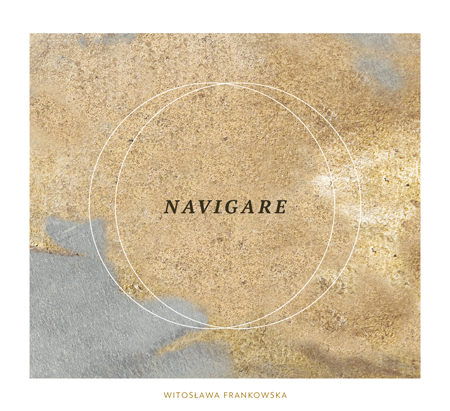| [Portfolio] | [Home]
NAVIGARE „[…] Passing through the Golden Gate and walking down the Royal Route, once traversed by monarchs visiting Gdańsk, one comes upon a building on the corner of Dluga and Tkacka Streets, number 14. High on the wall, one can see a series of sailing shops depicted on medallions displaying an inscription in Latin Navigare necesse est, vivere non necesse, which translates as Sailing is a necessity, life is not. While such a saying, attributed to the great Plutarch, does not arouse any particular astonishment to the passer by in a port city, the message invariably prompts passers-by to reflect. The essence of human nature has always been the need for change, to explore what is known and to discover what is not. This imperative to discover new shores did not just motivate travelers and mariners but also those associated with art and science. The idea behind this recording came from a need to examine various areas of early music. The symbolism of a musical sea voyage has and is shared by composers and performers ready to give up their safe havens and face new genres and aesthetics. The album opens with a little-known piece, This Golden Sun by the Renaissance poet and composer Sebastian Fabian Klonowic (around 1545 to 1602). It comes from a collection of Hebdomas, written in 1581, for each day of the week, with words taken from the Old Testament. The text refers to successive days during the Creation. This Golden Sun wasintended as the forth in the cycle, for Wednesday. The author does not limit himself to a plain repetition of the events as described in the Book of Genesis, he stresses the role of Christ in the history of salvation (Jesus Christ, son of God, a sun that never sets). The metaphors in the first stanza would not be lost on travelers: Golden sun, dainty sun, our only sun, Without doubt, Italy, the cradle of stile nuovo, was the most influential centre of seventeenth century music. The Italian chapter of our album is opens with Ulysses famous monologue, indeed the personification of homo viator, abandoned upon unknown shores. The scene of his awakening, Dormo ancora o son desto? comes from the first act for the opera by Claudio Monteverdi (1567–1643), Il ritorno d’Ulisse in patria (1640). Monterverdi’s contribution to seeking out new horizons cannot be overestimated. The theme of undertaking new stylistic challenges is also present in the work of another Italian composer, Bernardino Borlasca (1580–1638?), who devoted one of his works, Carco d’honori of a panegyric character, to the Senate of the city of Gdańsk. He was probably hoping for future commissions. This is not surprising as Gdańsk in the seventeenth century was well-known throughout Europe for its multicultural wealth coming from a diversity of traditions, languages and religions. It is worth mentioning that none other than Johann Sebastian Bach showed interest in the post of Cantor at St. Mary’s church in Gdańsk. These pieces have gained a new life thanks to close cooperation with Professor Danuta Szlagowska and Professor Danuta Popinigis, who are working on the Thesaurus Musicae Gedanensis. This is the very first recording of Borlasca’s pieces, from the manuscripts, dedicated by him to the Council of the City of Gdańsk. Love, seen as a journey into the unknown is what links Borlasca’s other madrigal O quante volte with the arietta by Barbara Strozzi, Amor dormiglione and the cantata by G.F. Handel, Mi palpita il cor. Lucrezia, the title heroine of Handel’s cantata of the same name, is moving towards yet another, very different shore. Disgraced by Sextus Tarquinius, she entrusts revenge to her husband and kills herself. Legend has it that Lucrezia’s death was the cause of the uprising that led to the downfall of the monarchy and the establishment of the Roman Republic. Lucrezia and Mi palpita il cor are visible manifestations of Handel’s fascination with the achievements of Italian Reaching out to new shores always involves some trepidation and uncertainty. It involves risk, potential losses and misunderstandings. It is, however, as proclaimed by the facade on that building in Gdańsk, a necessity. Witosława Frankowska Translated by Adam Gosiewski
Sebastian Fabian Klonowic (1545–1602?) Philip Rosseter (1568–1623) Thomas Morley (1557–1603?) John Dowland (1562–1626) Daniel Purcell (1663–1717?) Claudio Monteverdi (1567–1643) Bernardino Borlasca (1580–1638?) Bernardino Borlasca (1580–1638?) Barbara Strozzi (1619–1677?) Georg Friedrich Händel (1685–1759) Francesco Geminiani (1687–1767) Georg Friedrich Händel (1685–1759) Małgorzata Rocławska — soprano [4, 7, 9] Producer, Recording, digital editing, mastering — Mariusz Zaczkowski Studio MTS © ZAiKS 2018, MTS CD-033
|
